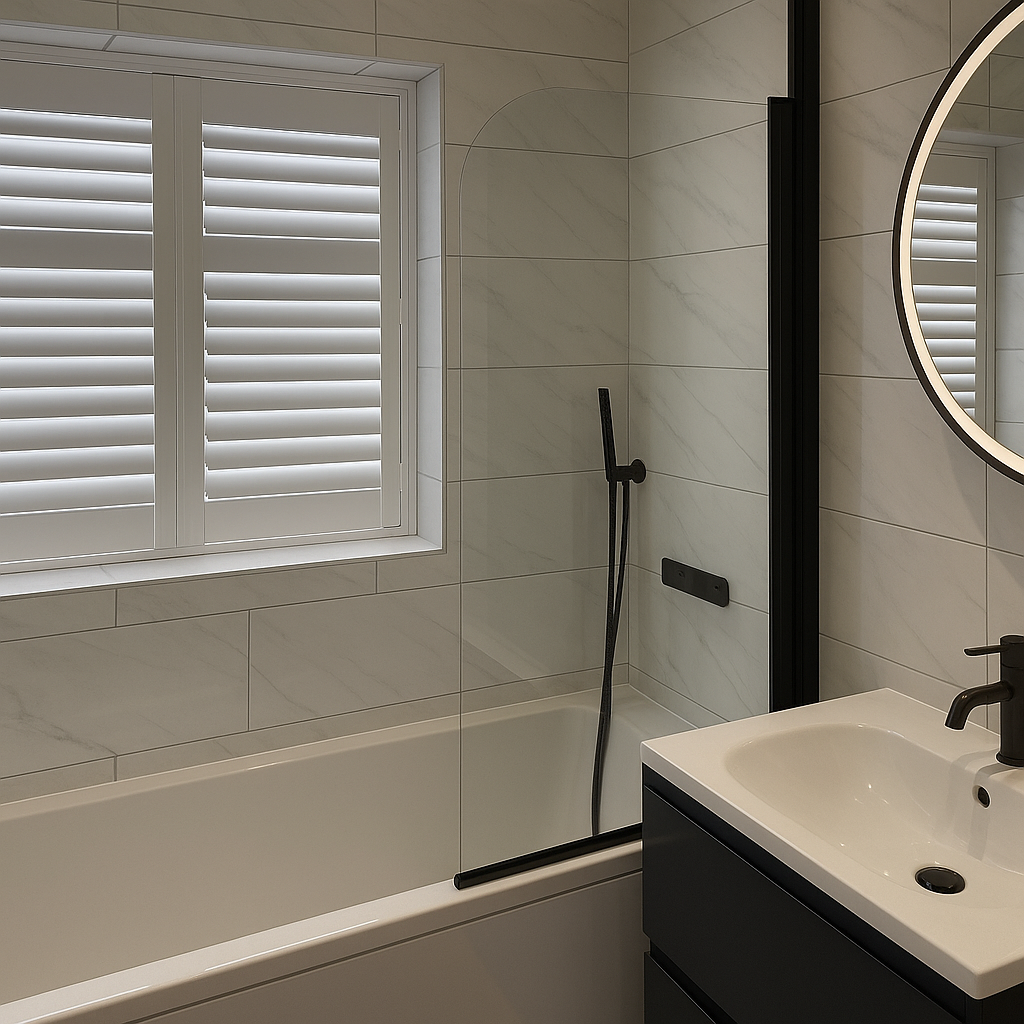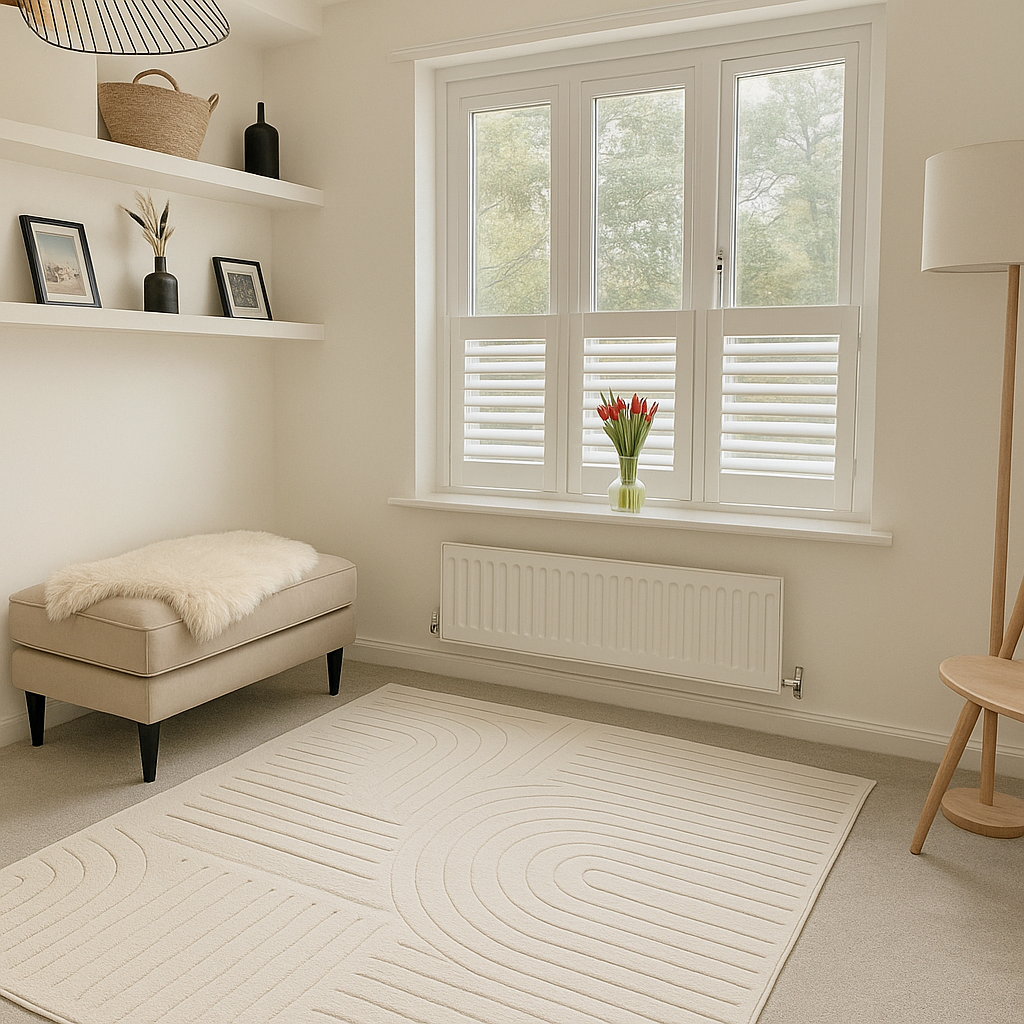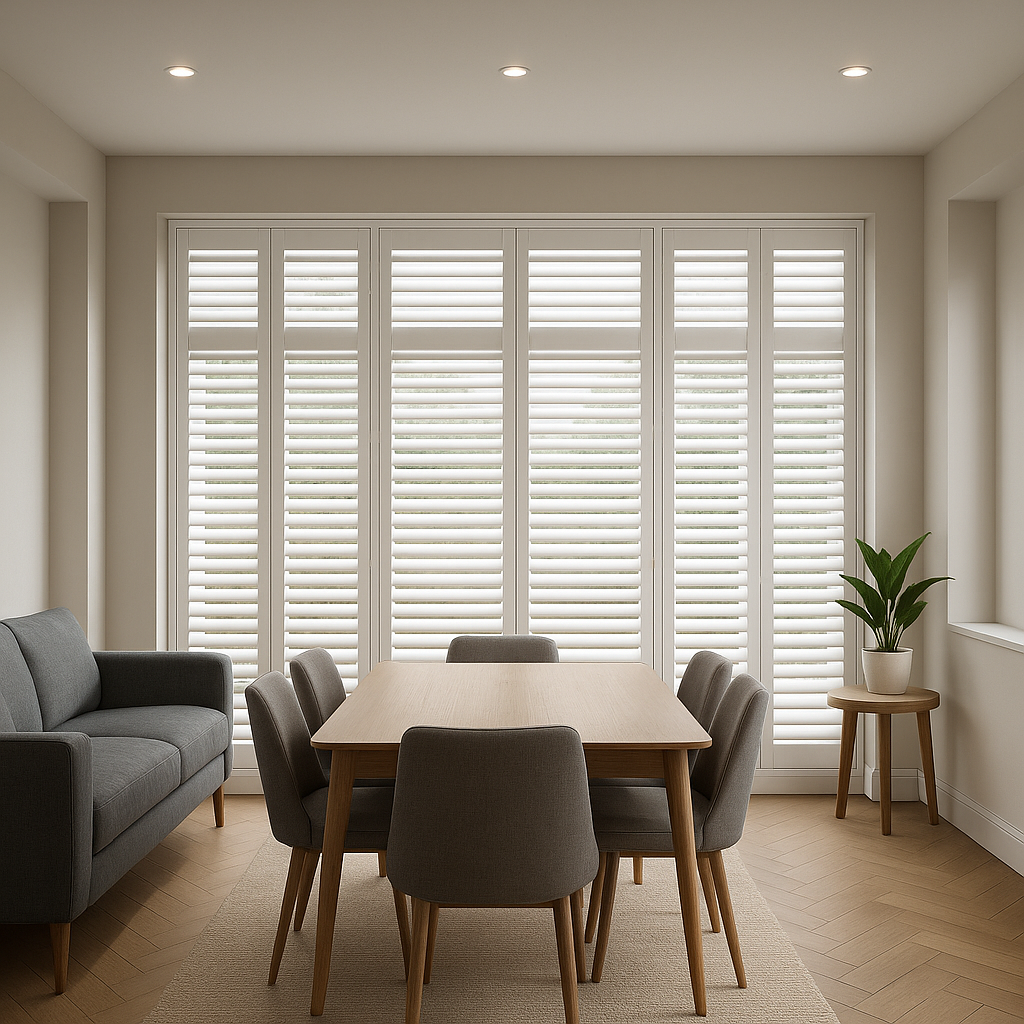How to Measure for Shutters (Step-by-Step UK Guide)
By Shutters 365 – Updated for 2025
Introduction
When it comes to fitting beautifully made-to-measure shutters, the biggest question that comes to mind is “how to measure for shutters” The answer is that accuracy is everything. The good news? Measuring your own windows is easier than you might think. With just a few tools, a steady hand, and our simple step-by-step guide, you can get professional-grade results without the extra cost.
Whether you’re measuring a standard window, bay window, box bay, exterior shutters, outside shutters, and plantation shutters this guide walks you through the exact process our Shutters 365 team uses every day.
What You’ll Need
- Steel tape measure (not a fabric one)
- Spirit level
- Pencil and notepad
- Shutters 365 L50 frame templates (for bay and box windows)
- Digital angle finder (optional, for non-standard bay angles)
Always measure in millimetres (mm) and record every number exactly as you see it — don’t round up or down.
Step 1 – Choose Your Mounting Style
Before you start, decide how your shutters will fit:
- Inside Mount (Recess Fit): Fits neatly inside the window recess for a flush, built-in appearance.
- Outside Mount (Face Fit): Installed on the wall or frame, ideal for shallow or uneven recesses.
Golden rule: Measure twice – order once.
Step 2 – Select Your Frame Type
For standard windows, choose between:
- L-Frame: Works for both inside and outside mounts. It sits flat to the wall and offers a clean finish.
- Z-Frame: For inside mounts only. It wraps around the recess edge to hide gaps and irregularities.
For bay and box windows, you’ll use our L50 frame system, following the printed templates at 100% scale.
Step 3 – Measure the Width
Standard Windows:
- Measure inside the recess at top, middle, and bottom.
- Record the smallest measurement — this ensures your shutters fit perfectly.
Bay & Box Windows:
- Place your L50 templates inside the recess for each section.
- Make sure templates don’t overlap at the corners and aren’t positioned directly under handles or vents.
- Measure from the outside edge of one template to the next, taking readings at top, middle, and bottom.
- Record the smallest measurement for each section.
Step 4 – Measure the Height
For all window types:
- Measure from the sill to the top of the recess at left, centre, and right.
- Record the smallest height.
- For bays, use the same height across all sections to keep mid-rails aligned.
Step 5 – Check the Recess Depth
Each louvre size requires a minimum depth for clearance:
| Louvre Size | Minimum Recess Depth |
|---|---|
| 64 mm | 60 mm |
| 76 mm | 70 mm |
| 89 mm | 75 mm |
| 114 mm | 85 mm |
If handles or vents project into the recess, you’ll need build-outs — small spacer blocks (usually 20 mm or 30 mm) to create the clearance your shutters need.
Step 6 – Mid-Rails (Divider Rails)
For taller shutters, mid-rails add strength and balance:
- Over 1,500 mm high: Include one mid-rail
- Over 2,500 mm high: Include two mid-rails
Measure from the sill to the centre of each mid-rail position.
For bay windows, use the same height for all sections for perfect alignment.
Step 7 – Style-Specific Measurements
Depending on your chosen shutter style:
- Full Height: Panels cover the entire window — no extra measurements needed.
- Tier-on-Tier: Two independent shutter sets (top and bottom). Measure from the sill to the centre of the join between the two tiers.
- Café Style: Covers only the lower portion of the window. Measure from the sill up to the desired height where you want the top of the shutters to stop.
Step 8 – Check Squareness
Measure both diagonals of your window (corner to opposite corner):
- If the difference is 5 mm or less, your window is square.
- If the difference is more than 5 mm, consider an outside mount for a better fit.
Step 9 – Outside Mount Measuring
If you’re fitting shutters outside the recess, you’ll need to allow space for the frame to overlap the opening.
- Measure the overall area to cover — width and height.
- Then add 40 mm on each side so the frame overlaps evenly and provides a neat, professional finish.
- Record all measurements in millimetres, exactly as taken.
💡 This extra 40 mm ensures full coverage and hides uneven edges or out-of-square frames
Step 10 – Bay & Box Window Angles and Sections
If your bay corners aren’t standard (90° or 135°):
- Use a digital angle finder, or
- Create a cardboard template pressed into each corner.
Number your bay sections from left to right — for example:
- Bay 1 = Far left
- Bay 2 = Centre
- Bay 3 = Far right
Each section is made as an individual frame that joins neatly at the corners.
Small gaps can be filled with caulk during installation.
Step 11 – Final Notes
- Record measurements exactly as taken — no deductions.
- Always measure to the nearest millimetre.
- Double-check your notes before submitting your order.
- If you’re unsure about any dimension, contact our team — we’re happy to confirm your details before production.
You’re Ready to Order
Once your measurements are complete, you can submit them via the Shutters 365 online configurator. Every set is made-to-measure, crafted from high-quality PVC or hardwood, and delivered ready for your DIY installation.
If you’d like a printable version, download our official measuring guides:
If you’ve been thinking about transforming your windows with stylish, made-to-measure shutters, you’ve probably wondered — how much do DIY shutters actually cost?






